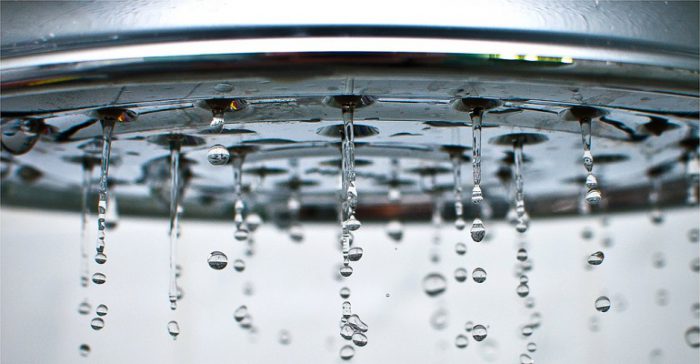Daniel Stewart for Zondits, January 26, 2016. Image credit: Dean McCoy
Winter wreaks havoc on my skin, particularly on my hands, which crack if I don’t keep them slathered with lotion. This seasonal affliction got me thinking about indoor humidity levels and what can (and should) be done about them. Recently, I came across an article on bathroom humidity comparing the efficiency of a bathroom vent to that of a small dehumidifier. I will briefly break down the components in the article that led me to agree with the author’s claims.
- The dehumidifier’s electric usage is converted to heat, which is useful within the house.
- Recovering the latent heat in the steamy air means that more useful heat is retained in the house.
- Minimizing the volume of air being exhausted from the house means that less outdoor air must be brought in (and heated).
- A potential next step would be to plug the shower drain to retain shower water until it cools down (releases its heat to the surrounding air within the house) and then let it go down the drain. In this way you can utilize more of the heat produced by the hot water heater to actually heat your house.
When taking this approach, it is important to make sure that water does not condense and remain on surfaces for prolonged periods, as this could promote mold growth (after all, mold prevention is the whole reason for getting that vapor out of there). Distributing steamy shower air throughout a whole house, though, would not add enough moisture to the air to cause issues. And since we’re barely a third of the way through winter, there’s time to make other household changes to retain heat and cut energy use.
Efficiency & Bathroom Humidity
Cold House Journal, January 27, 2010
Here is the routine: In the morning, I switch it on just before showering, set at 50% humidity. It stays on steadily through a shower, and for perhaps 15 minutes after, as it dries out the air. Then over the course of the day it will briefly re-activate now and then, as the air becomes a bit humid again from wet towels, etc. By bedtime things are quite dry in there, and we turn it off altogether overnight. Next day, repeat. With two of us showering, I estimate the thing actually runs a total of 1.5 hours a day. It condenses about a quart of water a day into its bucket.
The dehumidifier (running) uses about 400 watts to power its fan and compressor. All of that winds up as heat in the bathroom. Moreover, it claims to condense 1.6 liters of water for each 1 kWh of electricity it uses– which about agrees with what I’ve observed. Now, each liter of steam condensed back to liquid releases a further 3,600 BTU of heat, which equals roughly 1 kWh also. So, for each kWh of electricity used to run the dehumidifier, we get back 2 kWh of heat in the bathroom. It is, effectively, like a 200% efficient space heater. Plus, we get a quart of distilled water every day (it’s enough to “small flush” the toilet, saving yet more energy!)
Let’s compare to a vent fan. That might use 50W to run its motor. All that turns to heat as well, but it goes out the vent– no use. All the steam goes out the vent– no use. Furthermore, in running 1kWh of electricty through a 50W, 50 cu. ft. per minute fan, you will vent out 60,000 cu. ft. of air. If the air in your house is 70º, and outside is 20º, you’ve blown out 54,000 BTU of heat (= 15.8 kWh).
So, assuming they serve the same function, about equally well, and you’re happy to have extra warmth in your house, which appliance would you rather use: the one that gives back 2 kWh of heat for each 1 kWh you put in, or the one that removes 15.8 kWh of heat for each 1 kWh you put in?
One final item: the vent-user will get out of the shower into bathroom air that is either warm but 100% humid (if the fan is used the way Frank does) or relatively dry but no warmer than it was to begin with (if a high-power vent is running while showering). The dehumidifier user, however, steps out into a bathroom environment that is warmer than it started, yet not saturated with humidity. And when the rest of the house is 45º, this is quite a pleasant bonus.
